The Markha Valley Trek is one of the most spectacular and famous treks in the Ladakh region of India.
Located in the northwestern area of India, the Ladakh region is famed for its wildness and untouched beauty.
On this page, you will find a comprehensive and impartial guide to the Markha Valley Trek.
Markha Valley Trek
The Markha Valley Trek follows a stunning high valley with superb views across the mountain region and is one of the best ways to still experience the unique culture of the High Himalaya region. The Markha Valley trek follows the Markha River downstream taking in several high passes including Ganda La (15748 ft) and Kongmaru La, (17,060 ft). From both passes you get epic views across the landscape with the tall peaks of Kang Yissay and the 20,086 ft Stok Kangri coming into sight.
Not only is the trek one of mountain beauty, but it also takes trekkers through a landscape of ancient farming with many green irrigated fields and local villages being passed along the way. You’ll also experience several monasteries and meet the brightly dressed monks as they go about their daily lives. You’ll will be exposed to several waist-deep river crossings, high rocky canyons and explore many buddhists villages en-route.
Please Note: The trek is moderately difficult due to the length and high altitude of both passes. There will be several steep trek ascents and you may have to walk over slippery scree on occasion. You will need to have a good level of stamina and fitness to have a really good time. Accommodation will generally be camping.
Regional Map
The Markha Valley Trek is located between the Zanskar and Ladakh in the Himalaya region of North-west India.
Please see the map below for details.
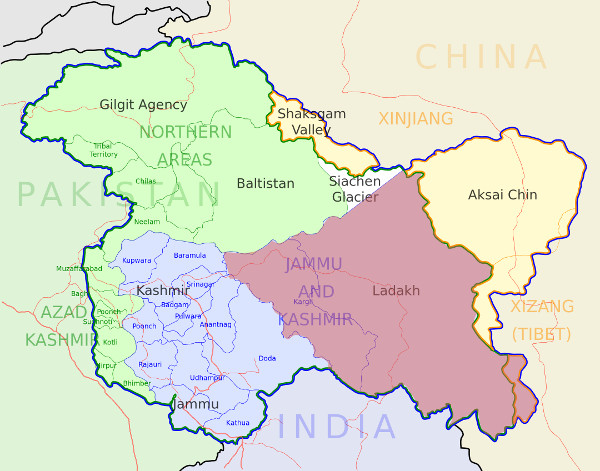
Markha Valley Hike Itinerary
Below is a detailed Markha Valley Trek itinerary. Please note that this is a typical itinerary that we would expect many operators to adhere to. However, some tour operators offer variations on this route.
For example, it is not uncommon to start from Spituk and follow the route that leads to Hemis.
Day 1-3: Arrive Delhi - Transfer to Leh
From Delhi International Airport, you will need to take a domestic flight to the city of Leh. It is worth spending a day in Delhi if you have the time, as well in Leh, where you can visit Leh Market, Leh Palace and Shanti Stupa.
If you have more time, it is worth getting a taxi to visit the Shey Palace, Likir, Basgo and Alchi Monastery, Sangam and Thickset. If you’re lucky, you’ll witness the Grand Hemis Festival at Hemis monastery.
Day 4: Leh to Chogdo via Martselang (4½ hours)
You will need to get a jeep from Leh to the starting point at Martselang (3600 m). As you drive, you may be given the opportunity to visit the Palace of Ladakh. The trek begins as one enters the Hemis National Park, where, if you’re lucky, you may glimpse endangered wildlife such as the elusive snow leopard, Tibetan wolf and the great Golden eagle. You will trek for several hours to the small village of Chogdo (4000 m).
Day 5: Chogdo 4000m – Nimaling 4700 m via Kongmaru La 5260 m (6-7 hrs)
Today begins with a steep ascent that leads to your first mountain pass – Kongmaru La (5260 m). The climb is worth it though as you get outstanding views of the north face of Kangyatse (6400 m), Zanskar and the epic Karakoram range. After taking in the view you then descend down towards the greener pastures of Nimaling. It is here that you will meet villagers who spend the summer months tending their herds. You camp the night here.
Day 6: Nimaling – Hankar – Markha 3650m (5-6 Hours)
From here, you begin the descent to the village of Hankar. You begin by walking through lovely green pastures whilst also taking in the Himalayan wildlife such as the Marmot, Mountain Vole and Weasels. You then cross a cool mountain lake. This is the perfect place to take lunch and enjoy the stunning scenery. As you continue down you reach the irrigated farmlands of Thochungtse. At the campsite there is a lovely spring that is well known throughout the region for its medicinal properties!
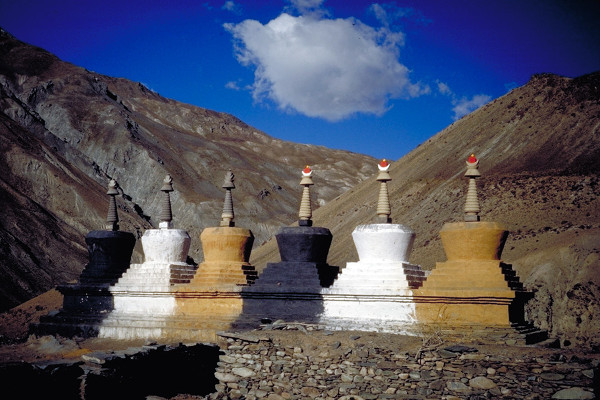
Day 7: Markha to Skiu
Today, you head for Skiu via Markha! Along the way you will make several river crossings. Once at Markha you will have time to explore the village before pushing on to Skiu. Once out of Markha you will descend through the small provinces of Nakdi , Sarah and Hamburjah and Pentre. Each province is only inhabited by 2 to 3 families roughly. After trekking through lush flatlands, you reach your campsite at Skiu where you bed down for the night.
Day 8: Skiu to Shingo 4125m (4-5 hrs)
Today, you follow the Zankar river upstream to the small village of Skiu. Here you will turn away from the main river and follow the stunning gorge up into Shingo. You camp overnight here.
Day 9: Treks to Rumbak 3800m (6-7hrs)
From Shingo, you climb gradually as you ascend over the Ganda La pass at 4850 meters. From there you pass Yurutse and continue down to your camp near Rumbak.
Day 10: Rumbak to Stok 4200m via Stok la 4900m (5-6 hrs)
Today is a big day. You begin your steady ascent up to the base of Stok la (4900 m). From there your trail becomes steeper as you climb ever higher to cross the pass. However, you’ll be rewarded along the climb with stunning views of the Indus valley and the incredibly colourful rock formations of Stok la. After crossing and taking in the amazing vistas you then begin your decent. You take the trail along the mountainside until you reach the village of Stok. From here you will need to arrange transport back to Leh.
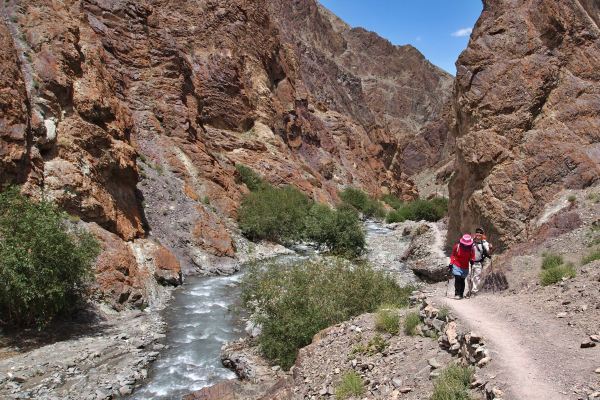
Photo by Kevin
Markha Valley Trek FAQ
How much does the Markha Valley Trek cost?
The cost of an Markha Valley Trek varies depending on how you choose to operate your trek. If you decide to the trek the route without a guide, then your costs will be considerably cheaper. Here's a rough estimate: Tour Agency: ~$600 – 1,000 for a cheap local agency to ~$1,500 – $2,000 for a Western trekking agency. You could do an independent trek for $25 per day potentially once on the trekking route.
However, hiking independently does pose problems. Firstly, there are a number of routes and finding your way can sometimes be tricky. Your guide will also know the best places to eat, sleep and take rests whilst also introducing you to many local people along the way.
Other costs include:
- Visa, Vaccinations, Insurance etc:~$300-$500
- Equipment (buying and hiring):~$500-$800
- Flights to Leh: ~$1,000
- Tips: ~$100-$200
- Misc (additional food, unplanned travel / hotels ect): $200
How many miles is the Markha Valley Trek?
The Markha Valley trek takes around 6-7 days to complete, starting in Leh. Depending on the exact start and end point, the Markha Valley hike is approximately 50 miles (80 kilometres) in distance. Total elevation gain / loss is about 2500m / m, with a max elevation of 5260m.
Are permits required for the Markha Valley Trek?
No, permits aren't required for the Markha Valley trek.
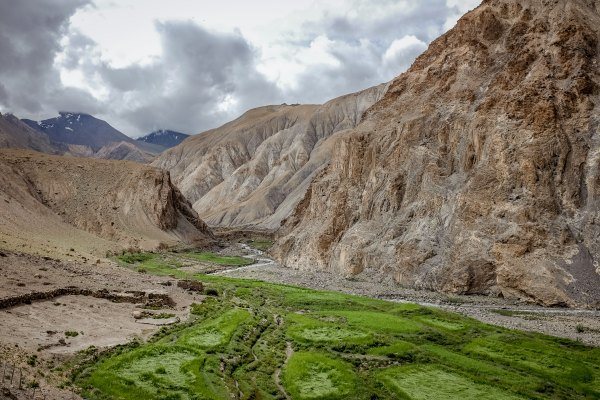
When is the best time to complete the Markha Valley Trek?
The best time to hike the Markha Valley trek is from June to October with the high season being in June and July. The monsoon season barely affects the region and you should experience little rain when trekking in this period. That being said, downpours do happen, and you must wear appropriate gear. During winter the trek experiences heavy snowfall and makes the area very isolated.
Is altitude sickness a risk on the Markha Valley hike?
Yes, the Markha Valley Trek is very much a high-altitude trek. At its highest point – Kongmaru La – you’ll be standing at 17,060 ft.
Whilst there are several high passes, the itinerary offered by all operators gives trekkers time to acclimatise to the altitude. Nonetheless, it is important to have a detailed understanding of the risks associated with high altitude trekking and how the body acclimatises.
We recommend you read our detailed article on Altitude Sickness and Acclimatisation.
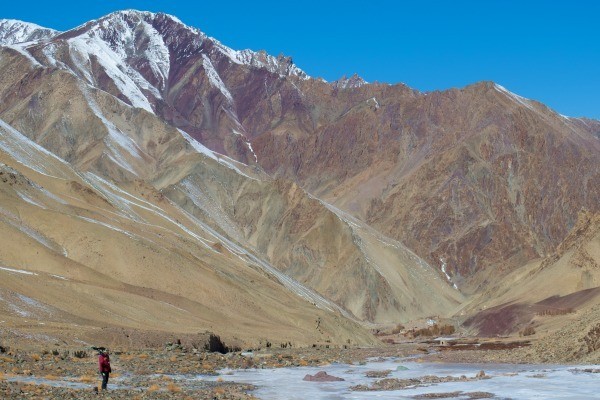
How difficult is the Markha Valley trail?
The Markha Valley Trek is fairly challenging. You will be trekking for 4-7 hours a day for over a week, so you will need to be in good physical condition. There are several high-altitude passes to cross and several steep climbs with the potential for slippery scree. The best way to prepare for this is to get as many miles under foot on hikes in your home country.
What gear do I need to hike the Markha trek in India?
Trekking in the Ladakh region requires a number of essentials like the following clothing and equipment:
Clothing
Equipment
The Markha Valley trek is both a fun and challenging trek that exposes you to a range of altitudes and fluctuating temperatures, especially between night and day.
Many pieces of equipment can be rented or bought in Leh, but we recommend bringing the most important pieces of gear with you. To help you plan and prepare for your trek, we have written a detailed packing list for multi-day treks.
Are there any recommended guidebooks for the Markha Valley hike?
There are a number of excellent guides we recommend for the Markha Valley Trek:
- Trekking in Ladakh by Radek Kucharski.
- Trekking in Indian Himalaya by Lonely Planet
- Trekking Guide to the Western Himalayas by Depi Chaudhry
- Ladakh: The Essential Guide by Partha S. Banerjee
Are there other routes besides the Marhka Valley?
Absolutely. We also recommend doing the Chadar Trek, Singalila Ridge Trek and Ladakh Treks for unparallelled sightseeing and experiencing Indian culture and history first hand.
Continue browsing
See more information on India. Or check out these other Indian Hiking articles:

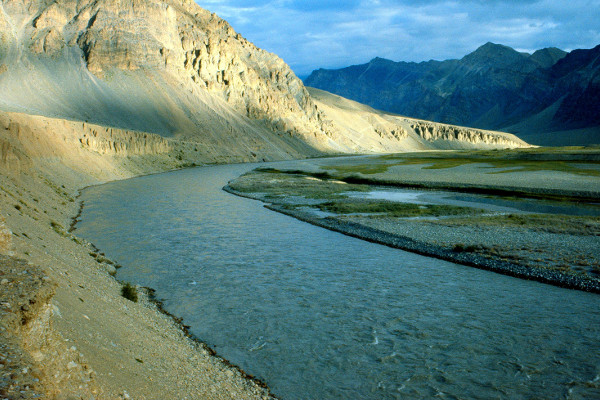

Hi Mark,
Thanks for the detailed information! I really appreciate it.
Can I ask you a question? I'm planning to do this trek in August and am planning to bring my 64-year old mother along. She's very fit and healthier than most 50-year olds, but in combination with the pretty sharp increase in altitude, I'm not sure if the Markha Valley Trek is the best choice. May is ask you about your opinion about this? And if your advise is negative, is there another trek in Ladakh that you'd recommend?
Thanks a lot!
With kind regards,
Merijn
Hi Merijn, I think you’re mum would be fine on the Markha Valley hike, but if you’re concerned there is an easier route that some operators offer inn te Nubra Valley. Hope that helps!
UPDATE JUNE 2023
The small stream in the valley from Nimaling to Chogdo is overflowing with melting water at the moment. As there are 20+ river crossings it is extremely dangerous to descend that way. If you can avoid this part and have time to return the way you came up, do so!
After a really nice and easy trek up to Nimaling, we attempted to climb down from Nimaling to Chogdo on the 25th of June via the Konmaru La East Pass. The first bit after the pass, was steep and a little sketchy but well manageable with some experience and sturdy footwear.
Unfortunately after that we were facing massive amounts of water flowing down the valley to Chogdo. After crossing the river twice (slipping and falling, almost losing our backpacks and hiking poles) we decided to wait until the next morning as water levels were expected to go down during the night. Which means we got stuck halfway on the mountain at 4500 meters and ended up staying the night emergency bivouacing (sharing 3 sleeping bags and one emergency bivouac bag between the 7 of us). We were lucky to be a group of (semi-)experienced trekkers who could make it down safely the next morning starting at around 4.30 am.
Moreover, travel agencies and locals in the camp in Nimaling do not seem to care or do not know any better, so do not expect warning from their side. Also there is no reception on the descend and even satellite phones do not work as they’re blocked in Ladakh. Stay alert and safe!
Thanks for the local insight Anna. Very helpful!
Hey!
Great info! I used your site to prepare the Anapurna trek and now heading to trek the Markha valley. I had som question about it:
It seems you did it in reverse compared to other descriptions I have seen, what is the reason?
I will do it in June, do you recommend taking a mattress or are the homestays on the way ok? Sleeping bag?
Cheers
Kevin
Hi Kevin, You can do the route either way, both routes involve going over high passes relatively early in the trek so make sure you are well acclimatised. Homestays have beds with mattresses, but you will want to take a 4-season sleeping bag as well. All the best!